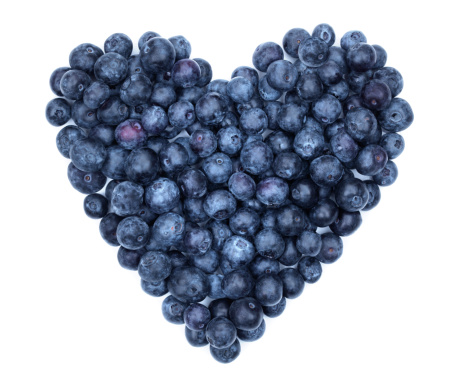Admittedly, breast cancer in men is rare. A man's lifetime
risk of the disease is 1 in 1,000, while a woman's is 1 in 8. But according to
a 2012 study that assessed more than 13,000 male breast cancers from the US
National Cancer Data Base, men with breast cancer are less likely to survive
the disease than women.
The researchers found that at diagnosis, men were likely to
have much larger breast tumors, and the cancer was more likely to have already
spread to other areas of the body.
Let’s look at the signs of male breast cancer, the
diagnostic and treatment options for the disease, and why there is such lack of
awareness of male breast cancer among the general public.
'Most people don't think of men as having breasts'
"Many people don't know that men can get breast cancer
because they don't think of men as having breasts," Jackie Harris,
clinical nurse specialist at UK charity Breast Cancer Care, told Medical
News Today. "In fact, both men and women have breast tissue, although
men have much smaller amounts than women."
Until puberty, both young girls and boys have small amounts
of breast tissue consisting of lobules (glands than can produce milk), ducts
(small tubes that carry milk from the lobules to the nipple) and stroma (fatty
and connective tissue).
When girls reach puberty, high levels of the female hormone oestrogen
cause substantial growth in lobules, ducts and stroma, producing full breasts.
Because boys and men have low levels of oestrogen, they are very unlikely to
form fully grown breasts.
However, what breast tissue a man has still contains
ducts, and cells in these ducts - like all cells in the body - can become
cancerous. The cancerous cells can then enter the lymphatic vessels of the
breast and grow in the lymph nodes situated above and below the collarbone and
under the breast bone. Once in the lymph nodes, it is likely the cancer cells
have entered the bloodstream and spread to other areas of the body.
Although most male breast cancer cases begin in the ducts -
known as ductal carcinoma - it can also develop in the breast lobules (lobular
carcinoma), but this only accounts for around 2% of all male breast cancers.
The risk factors for male breast cancer
Exactly what causes breast cancer in men is unclear. But
many of the factors that increase the risk of breast cancer among women are the
same for men.
As men age, their risk of breast cancer increases, with the
average age of diagnosis being 68 years. Men who have a family history of
breast cancer are also at increased risk of developing the disease.
One of the most well-known risk factors for breast cancer
among women is inherited BRCA1 and BRCA2 gene mutations. Men who inherit these
mutations are also at much higher risk of breast cancer. Those who have a BRCA1
mutation have a 1 in 100 lifetime risk of the disease, while a BRCA1 mutation
poses a 6 in 100 lifetime risk.
Past research has suggested that men with Klinefelter
syndrome - a congenital condition in which an additional X chromosome is
present - are also at higher risk of breast cancer.
Other factors that increase the risk of breast cancer in
women, such as smoking, obesity, radiation exposure and high alcohol
consumption, can also increase men's breast cancer risk.
'It is vital for everyone to be breast aware'
Women are encouraged to frequently check their breasts for
any abnormalities, such as lumps, discharge from the nipple or changes in
appearance or texture. And although many men may not be aware of it, they
should do the same.
The most common signs of breast cancer in men are lumps
or swelling in the breast or lymph node areas, dimpling or puckering of the
skin, nipple retraction, nipple discharge and scaling or redness of the nipple
or surrounding skin.
It is important to note that such signs do not always
indicate breast cancer; they could be caused by a condition called gynecomastia
- a benign enlargement of breast tissue. But if men spot any of these changes,
they should visit their clinician immediately to determine the cause:
"We know that the sooner the diagnosis, the more
effective treatment may be and the vast majority of breast cancers are found by
men and women themselves. It's vital for everyone to be breast aware.
Encouraging men to get used to looking at and feeling their
chest and under their arms regularly will help them to feel more confident
about noticing any unusual changes so they can go to their doctor
promptly."
Men embarrassed by breast cancer diagnosis
As with all cancers, early detection of breast cancer improves
treatment outcomes. But as the study by Dr. Greif and his team found, the
majority of male breast cancers are found in the later stages, which negatively
impacts the chances of survival.
Because the majority of information and research on
breast cancer focuses on women, men can feel ashamed if they are diagnosed with
an illness that is seen as feminine.
One reason behind this is lack of awareness. Because male
breast cancer is rare and many men do not realize it can affect them, they put
signs of the disease down to another cause and delay visiting their doctor.
And it is not just the thought of having breast cancer
itself that can deter men from seeing their doctor; the diagnosis and treatment
procedures that go with it can be difficult for men to deal with.
Diagnosis of breast cancer is very similar for men and
women. After a clinical examination to determine any abnormalities in the
breast tissue or lymph nodes, a man may be required to undergo a mammogram if
there is any suspicion of breast cancer.
Men may also be required to have a breast ultrasound or
magnetic resonance imaging (MRI) of the breast, before having breast tissue
samples taken to confirm if cancer is present.
Could routine breast cancer screening in men improve
diagnosis?
For men at high risk of breast cancer, such as those with an
inherited BRCA gene mutation, some organizations recommended regular
screenings.
The National Comprehensive Cancer Network, for example,
recommend that men at high risk of breast cancer have a clinical breast exam
every 6-12 months from the age of 35, and should consider having a mammogram at
the age of 40. However, there are no routine screening recommendations for the
average man.
According to the American Cancer Society: "Because
breast cancer is so uncommon in men, there is unlikely to be any benefit in
screening men in the general population for breast cancer with mammograms or
other tests."
The organization admits, however, that routine screening for
breast cancer in men has not been studied, therefore it is unclear as to
whether it would be useful for early detection of male breast cancer or not.
It is important to note that there are still no routine
screening programs for prostate cancer, which affects 1 in 7 men in the US.
Past research into routine screening for prostate cancer has found that
although it reduces deaths from the disease, it leads to over-diagnosis.
Given that the rate of male breast cancer is significantly
lower, it is unlikely that routine screening for the disease will be considered
anytime soon.
All treatments for male breast cancer based on data in
women
Men with breast cancer have the same treatment options as
women. The majority of male breast cancer patients have a mastectomy, which
involves removal of all or some of the breast tissue and, in some cases, the
removal of affected lymph nodes.
There have been very few in-depth studies looking at
treatment for male breast cancer, meaning health care providers are using
treatments that have only proven to be effective in women with the disease.
Male breast cancer patients may also need to have chemotherapy,
radiation therapy, hormone therapy, targeted therapy or bone-directed therapy.
But some health care professionals have questioned the
effectiveness of some of these treatments in men. To date, there have been very
few in-depth studies looking at treatment for male breast cancer, meaning
health care providers are using treatments that have only proven to be
effective in women with the disease.
"We don't know much about how to treat men
specifically," Dr. Kathryn Ruddy, of the Dana-Farber Cancer Institute in
Boston, MA, told The Huffington Post. "Every treatment we do comes
with the caveat that we're extrapolating from data in women."
Because of the rarity of male breast cancer, it can be
challenging for scientists to receive the funding for research into the issue
and to pull together enough participants to make the studies comprehensive.
But there has been some progress in the field. In 2007, Dr.
Nick Orr and colleagues, of the Breakthrough Toby Robins Cancer Research Centre
in the UK, launched the ongoing Male Breast Cancer Study, with the aim of
identifying genetic, lifestyle and environmental factors that increase breast
cancer risk in men.
The study, which now has more than 1,500 participants, has
already led to the discovery of a gene - called RAD51B - that causes breast
cancer in men. It is hoped the study will eventually lead to tailored treatments
for men with breast cancer.
Is male breast cancer awareness increasing?
There is no denying that breast cancer affects the lives of
women much more than men. This year, it is estimated that 231,840 women will be
diagnosed with invasive breast cancer and 40,000 will die from the disease.
With figures like these, it is no wonder that breast cancer information and
campaigns are more tailored toward women than men.
But it seems such focus on breast cancer in women has left
many people feeling that male breast cancer is overlooked.
In 2009, a number of male breast cancer advocacy groups -
including Out of the Shadow of Pink - worked together to establish the third
week of October as Male Breast Cancer Awareness Week.
Although this campaign has only officially been declared in
the states of Pennsylvania, Florida, New Jersey and Massachusetts, it seems the
myth that men are unable to get breast cancer is finally being dispelled, and
awareness of male breast cancer is gradually increasing.
Written by Honor Whiteman
Copyright: Medical News Today





